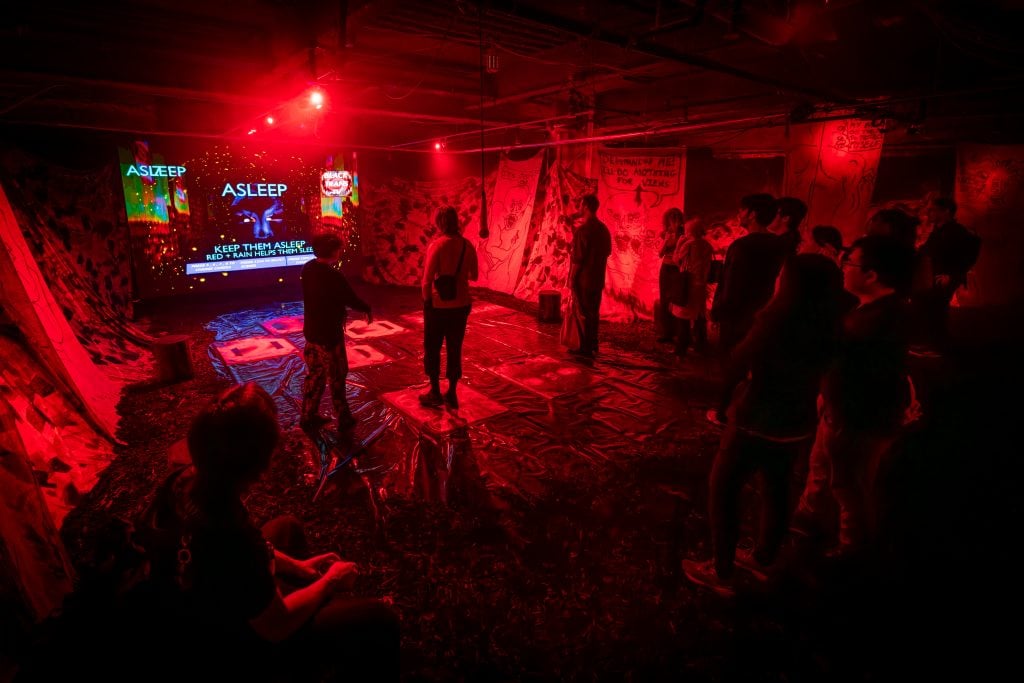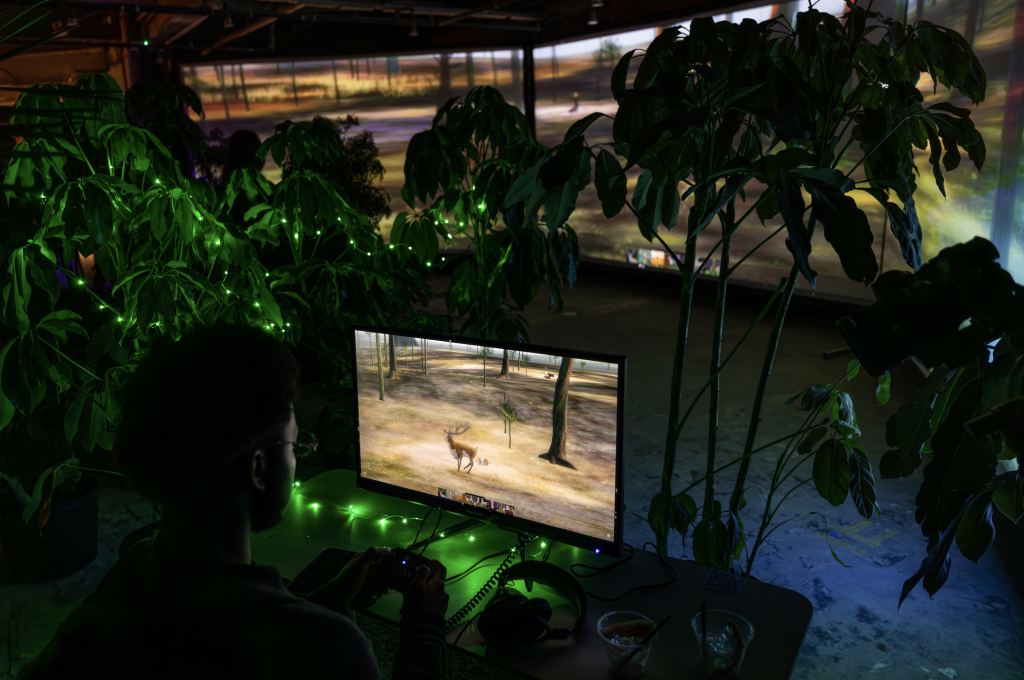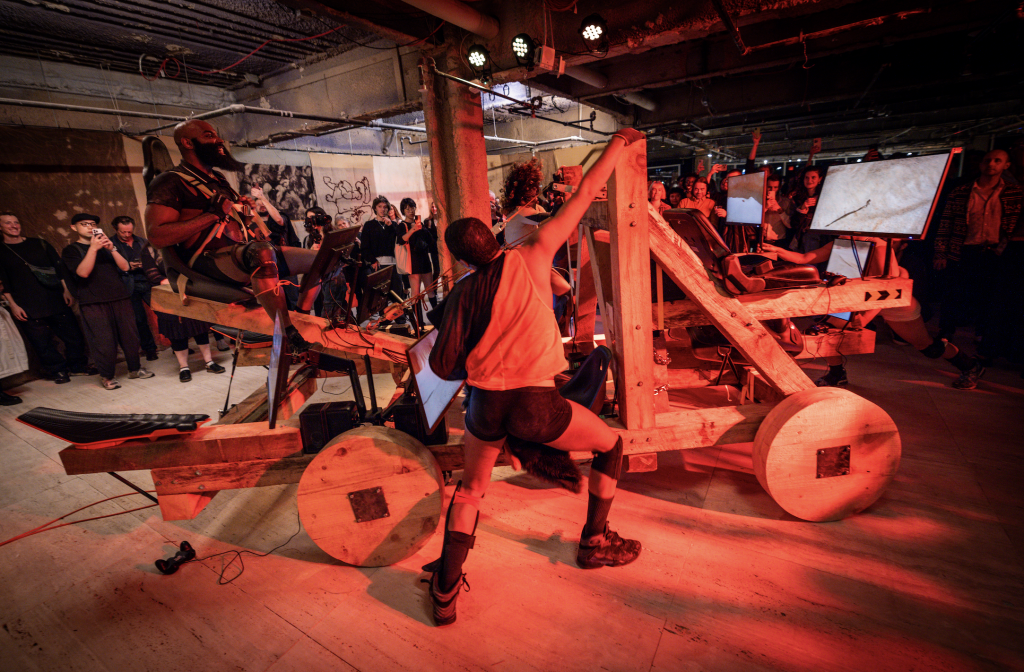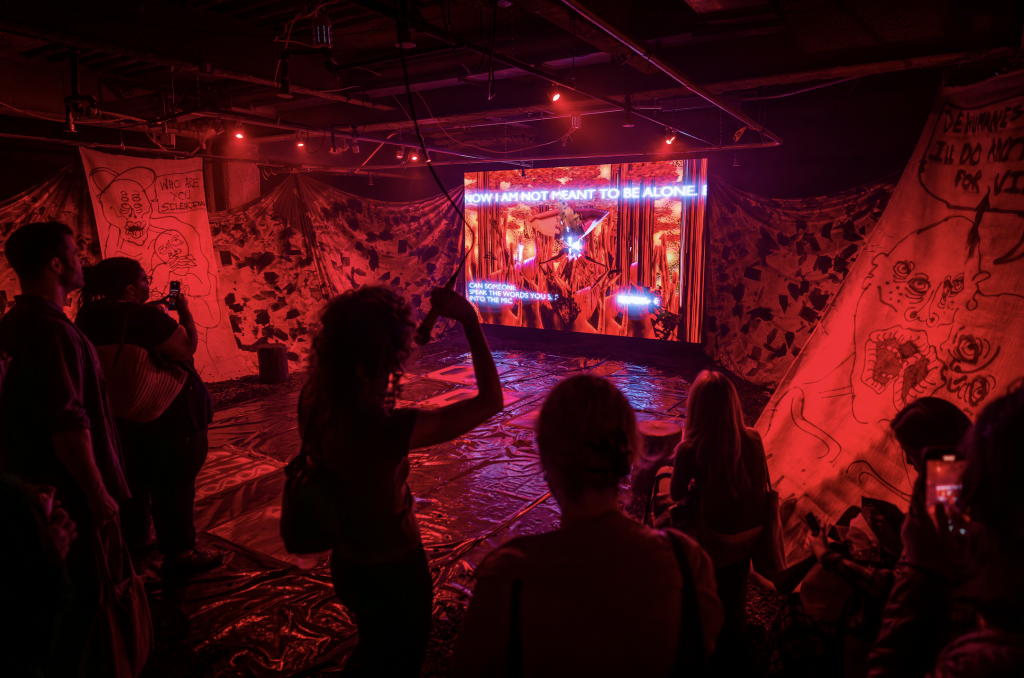Art & Tech
Video Games Transcend the Screen in an Immersive New Art Exhibition
Artist-designers Danielle Braithwaite-Shirley, Theo Triantafyllidis, and Tale of Tales studio all offer innovative games in this cutting-edge group show.

An arty gaming arcade now on view in New York’s Financial District might reshape your thoughts on games. New York–based media accelerator Onassis ONX has partnered with Arts Technologies, a project of London’s Serpentine Galleries, and Rhizome, New York’s “home for born-digital art and culture,” on “Group Hug,” a show of three games by Theo Triantafyllidis, Danielle Brathwaite-Shirley, and Tale of Tales studio, the venture of Auriea Harvey and Michaël Samyn. The offerings range from serene to hectic, all probing the relationship between games and society.
“Three billion people play video games globally,” Onassis ONX’s director of programming, Jazia Hammoudi, noted over email. “The gaming industry is a behemoth that shapes the tech economy. It’s vital that we pay attention to the visual culture of video games, as well as the modes of interaction that they model.”

A performer on opening night. Photo by Matthew Niederhauser.
“Group Hug” unfolds across a roomy fourth floor at Water Street Projects, an exhibition space in New York’s Financial District. Upon entering, guests will likely be drawn to their left, where a thicket of trees and ferns foregrounds three screens. The makeshift wilderness is host to Tale of Tales’ free gameThe Endless Forest (2005), which also appears in Harvey’s current show at the Museum of the Moving Image.
Video games are often accused of exacerbating violence and Attention Deficit Disorder. For 19 years, however, devotees of The Endless Forest have sought refuge in the game’s infinite idyll, simply frolicking as deer without dialogue or objectives.
“The Endless Forest started as a reaction to artists who were modding existing games,” Harvey told me via WhatsApp (using an abbreviation for “modifying”). “We always looked at those and thought the original games were way more interesting than anything you could mod, so why not make the original yourself? I’m very happy to see that a lot of artists are now taking that idea and using game engines in their work, way more than used to be commonly acceptable.”

Tale of Tales, The Endless Forest (2005). Photo by Matthew Niederhauser.
Around the corner, a massive catapult featuring eight seats, each equipped with a screen and controller, hosts Triantafyllidis’s Feral Metaverse. On opening night, performers dressed as the game’s zombie-esque characters christened the contraption.
Triantafyllidis’s game takes place in a dystopian desert, empty save for figures manned by other players. Feral Metaverse goes against the association between games and competition. Instead, each organically arising group must determine their objective, then complete it. Once you do, you can’t really play again.
“Feral Metaverse is currently in development as a large-scale multiplayer game and social space,” Triantafyllidis told me over email. “For the exhibition version of the game, I tried to come up with a shorter ‘game-loop’ that packs a lot of the ideas and interactions of this open world game into a 5- to 10-minute experience.”

Performers activating Feral Metaverse. Photo by Matthew Niederhauser.
“I’m focused on enhancing the spontaneity and absurdity that can arise when people collaborate,” he continued. “It’s about the shared experience and the joy of working together in a wild, untamed space.”
Brathwaite-Shirley’s The Lack: I Knew Your Voice Before You Spoke is another universe. She presented this game at Scotland’s Dundee Art Night last year, but Water Street Projects hosts a more immersive iteration. Upon passing through a red veil, players enter a dark, fragrant space. The Lack casts a glow over the room, draped in banners featuring phrases like “I’ve turned my back on them to protect myself.”
“I’m trying to capture the essence and the soul within the technology within these spaces,” Brathwaite-Shirley told me over the phone.
Instead of controllers, The Lack offers two hanging microphones, a floor-based keyboard, and four mini-games. It seems like you’re supposed to collect angels by fulfilling objectives, such as whispering secrets into one of the microphones. There’s no winning or losing, but players can miss out if they find the game’s chaos too intimidating.

A guest takes the liberty of emceeing The Lack. Photo by Matthew Niederhauser.
“Although obviously I love art, there were so many times I would go into a gallery and the art is so kind to me,” Brathwaite-Shirley said. “It does all the work, and I just have to sit there and consume. For me, it was starting to become a really unfair exchange.” Working with games, she said, “stops this endless consumerism and creates a conversation that you have to take part in to get anything.”
Thus, “Group Hug” reminds viewers that art is a site for interaction, not just an object-commodity—and that the way we see games inadvertently shapes society.
“Group Hug” is on view through October 20, 2024 at Water Street Projects in New York.





